Tuberous and foliage begonias
Plants of various kinds - herbaceous with large red, white, pink, or orange flowers, or lush bushes with small flowers and large asymmetric leaf plates of various colors and shapes - all these are begonias. There are about 1000 species of begonias and more than 2000 hybrid forms.
Begonia is a genus of perennial flowering plants in the family Begoniaceae. The native habitat of this plant includes Central and South America, Southeast Asia, where it thrives in humid tropical forests on old trees and roots.
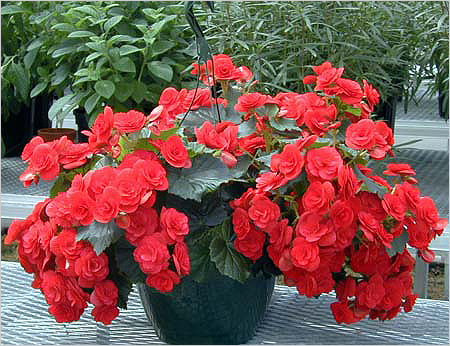
Begonias were first discovered in the West Indies and described by the French botanist and monk Charles Plumier, who named them after Michel Bégon, the organizer of a scientific expedition to collect plants.
There are annual and perennial begonias, evergreen and those with leaves that die off in winter. They can be tall bushes or creeping herbaceous plants. Some varieties thrive in open ground, while others are cultivated only as indoor plants. Hybrid varieties of begonias are most commonly found as indoor plants.

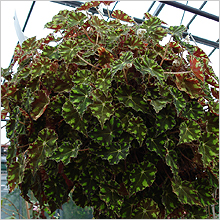
However, all begonias share clear criteria that unite them: asymmetric leaves, thick and fleshy stems, robust rhizomes, and unisexual flowers.
Growing begonias is not a difficult task and can be managed by even inexperienced gardeners.
In horticulture, begonias are divided into three main groups: bush, tuberous, and decorative-leaved.
Foliage begonias: two groups - royal begonia, diadem begonia. Their main decorative value lies in beautiful leaves; they also have flowers, but they are often small. Royal begonia includes many varieties imported from India a hundred years ago. It is characterized by a short, fleshy stem, large asymmetric leaves up to 25 cm long with silvery, pink, or lilac spots. Various varieties of diadem begonia have cut leaves of different sizes, resembling maple leaves.

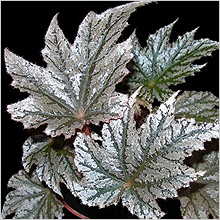
Linden. Ex Rodigas
Bush begonias: metallic begonia, angular begonia, numerous hybrids. Beautiful, fast-growing plants with large leaves and abundant flowers. Stems are straight or creeping, forming a lush bush. To give the bush a symmetrical spherical shape, it is useful to pinch the growth point or trim the stems.
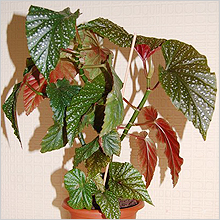
CORALLINA
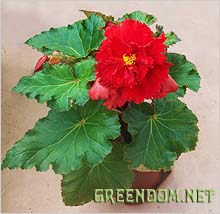
Tuberous begonias: low-growing herbaceous
plants with a large number of large double, semi-double, or single flowers during the flowering period. They bloom for a long time, usually in summer and autumn. After flowering, begonia tubers are kept in a dormant state for several months with minimal watering. The leaves wither. After the dormant period, tubers sprout new shoots and bloom again. It is essential to transplant and fertilize them.
Begonia species
Since there are so many species, it is always possible to find a suitable hybrid for breeding in an apartment and on the balcony, in a flower bed near the house, or in the office.
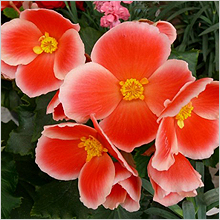
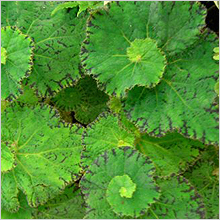
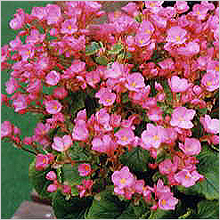
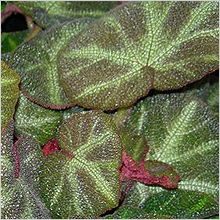
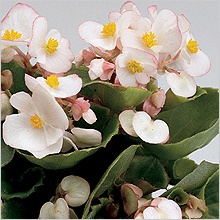
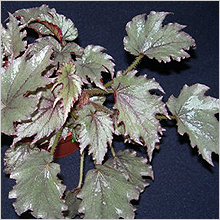
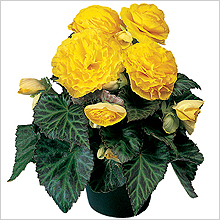
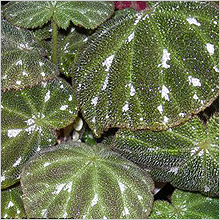
Begonia Care Indoors
Light. Begonias should be placed in well-lit windows, but avoid direct sunlight. Decorative-leaved begonias are shade-tolerant, and shading is necessary during the summer.
Temperature. Average room temperatures (65-75°F/18-24°C) are ideal. Don't expose begonias to temps below 55°F/13°C, because they are easily damaged.
Water. Abundant watering from spring to autumn, moderate in winter. Avoid overwatering. Tuberous potted begonias are not watered in winter; they are stored in dry peat substrate.
Soil. The soil for begonias should be nutritious with acidity ranging from 5.8 to 6.5. Therefore, leafy or soddy soil is mixed with compost, peat, and sand. They also thrive in a mixture of soddy (two parts), leafy, composted soil, and sand (one part). Containers for decorative-leaved begonias should be wider rather than deep.
Air Humidity. Begonias prefer humid air, but almost all types cannot tolerate water on their leaves, leading to brown spots. Therefore, these plants should not be sprayed. You can spray water near the plant, thus increasing humidity. Placing them near an aquarium, decorative fountain, or humidity-loving plants is also an option.
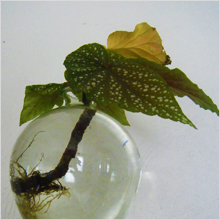
Propagation. Propagation of begonias is not a difficult task. They are usually propagated by stem and leaf cuttings, as well as seeds, division of the bush and rhizome. Tuberous begonias can be propagated by dividing the tuber or seeds. The best time for propagation is spring.
- Stem Cuttings: Cuttings with 3-5 leaves are taken, slightly dried, and planted in a substrate (leaf and peat soil, sand in equal parts). Water moderately, keep in warmth, provide good light but avoid direct sunlight. They root quickly, usually within a month. Water rooting is also possible.
- Division of the Bush: Begonias that bush well or spread along the ground and form additional roots are divided either by hand or by cutting to ensure each part has roots.
- Division of the Tuber: The tuber of a mature tuberous begonia can be divided into parts and planted in separate pots.
- Division of Rhizomes: Decorative-leaved begonias are propagated by dividing rhizomes in spring during transplanting.
- Leaf Propagation: Broad-leaved begonias are propagated with whole leaves or even leaf parts. After cutting the main veins on the lower surface, leaves are placed on moist sand and pressed with stones or pinned with wooden hooks. After about a month, roots grow at the incisions, followed by plants. Once well-rooted and strengthened, they are separated from the leaf and transplanted into pots. Young plants are planted in a mixture of equal parts of leafy, peaty soil, and sand.
- Propagation by Seeds: Begonia seeds are tiny. They are sown in February-March without covering the soil. The sowings are covered with glass. Water with a spray or pour water into the tray. Seedlings are picked when the third leaf appears, and after 2 months, they are transplanted into small pots. Tuberous begonias do not flower in the first year. Flowering can be achieved by supplementing light with a lamp in March-April.
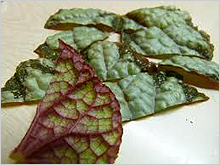

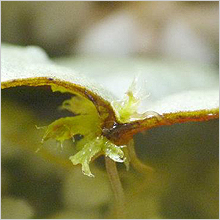
Repoting. Begonias are repoted annually, usually in early spring, into a mixture of soddy (two parts), leafy, composted soil, and sand (one part). Tubers of tuberous begonias are planted in fresh soil after the dormant period. Rhizomatous begonias are repoted as needed, mainly when the pot becomes too tight. After repoted, it is recommended to keep the plants in the shade for a few days in a draft-protected place.
Fertilizer It is beneficial to fertilize decorative-flowering begonias with a liquid complex fertilizer for flowering indoor plants once every two weeks from the moment of forming flower buds. During budding and flowering, plants should be mainly fed with phosphorus-potassium fertilizers. For stimulation of flowering, preparations like "Buton," "Cveten'," or "Zavyz" can be used. Nitrogen fertilizers are used for decorative-leaved varieties.
Dormant Period After flowering, tuberous begonias are prepared for the dormant period. Gradually reduce watering until the above-ground part of the plant completely dries. Remove all dried parts, place the plant in a cool room at 10-12 degrees Celsius, and water very rarely for 2-3 months.
Diseases and Pests Poor care may cause begonias to drop leaves and buds, and leaf tips may turn brown. The reason is likely insufficient soil moisture and air dryness.
- Powdery Mildew: This disease is caused by a fungus. If you find a white powdery coating on the leaves, it is probably powdery mildew. Damaged leaves twist and dry out. Flowers fall off. Treat with special biological agents against powdery mildew, available in any flower shop.
- Gray Rot or Monilial Burn: Also a fungal disease that can cause stems and leaves to wither. Remove the affected parts, treat with a 1% Bordeaux mixture or other fungicides before and immediately after flowering, approximately a month after the first treatment.
Pests Aphids, nematodes, and spider mites are dangerous for begonias.




